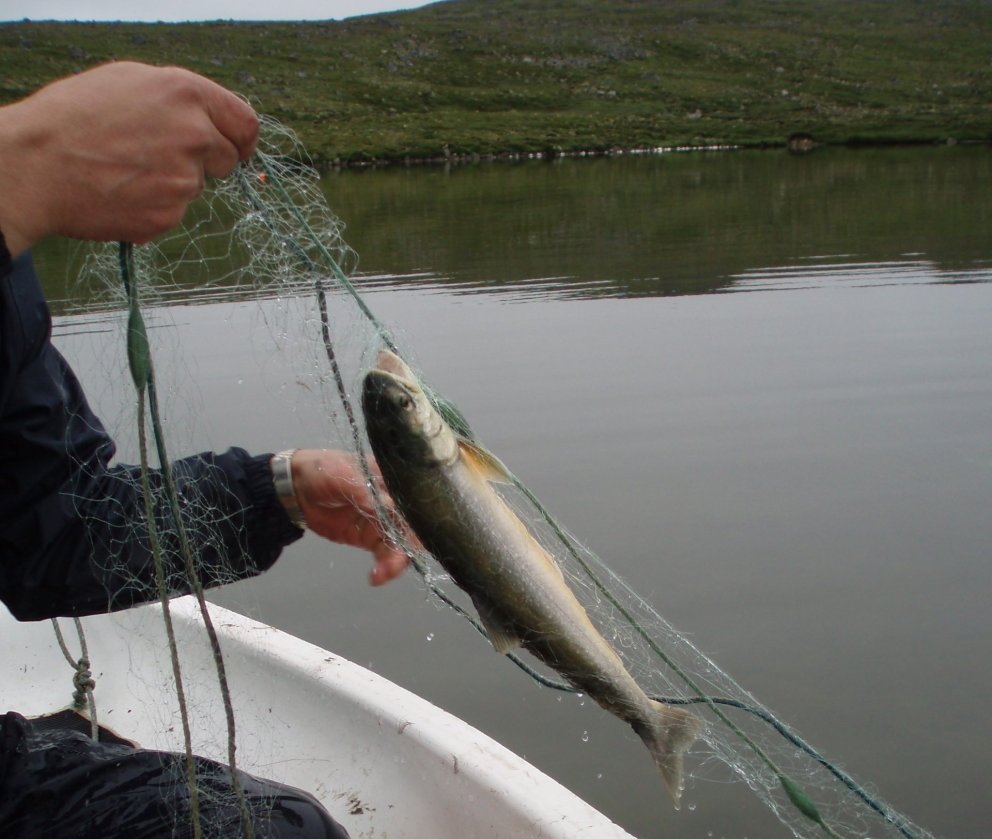- Research
- Fish tagging
- Lumpfish research
- Oceanography
- Seabed mapping
- Arnarfjörður
- Drekasvæði
- Ísafjarðardjúp
- Jökulbanki
- Jökuldjúp
- Kolbeinseyjarhryggur and adjacent area
- Kolluáll
- Langanesgrunn
- Látragrunn
- Nesdjúp
- Reykjaneshryggur and adjacent area
- Selvogsbanki
- South of Selvogsbanki
- South of Skeiðarárdjúp
- South of Skerjadjúp
- Southeast of Lónsdjúp
- Southwest of Jökuldjúp
- Suðausturmið
- Suðurdjúp
- Vesturdjúp
- East of Reykjaneshryggur
- Vestfjardarmid
- Seal research
- Whale Research
- Advice
- About
Seminar, October 19th - Árni Kristmundsson
17. October 2023
Árni Kristmundsson, head of the Fish Disease laboratory at Keldur, has a seminar on the 19th of October in Hafrannsóknastofnun's meeting room.
The seminar's title is Tetracapsuloides bryosalmonae and proliferative kidney disease in Icelandic salmonids
– Comparative data from two different time periods –.
Time: 12:30-13:00, 19th of October
Place: The meeting hall in Fornubúðir 5, Hafnarfjörður
Stream: Live through MFRI's YouTube channel
Lecturer's language: Icelandic, slides will include Icelandic and English text
Tetracapsuloides bryosalmonae and proliferative kidney disease
in Icelandic salmonids
Comparative data from two different time periods
Tetracapsuloides bryosalmonae is a myxozoan parasite and the causative agent of proliferative kidney disease (PKD), a serious, temperature-dependent, and emerging disease affecting salmonid fish. The pathogen requires two different hosts to complete a full reproductive life cycle, i.e., fish and freshwater bryozoans.
The disease has long been known abroad and has caused significant damage to salmonid populations, both farmed and wild. The emergence of PKD is directly related to water temperature, which must reach at least 12°C for several weeks for fish show clinical signs of the disease. However, the parasite is able to complete its life cycle at lower water temperatures and maintain infections during colder periods.
With warming climate, problem caused by PKD and have increased significantly in wild salmonid populations in Europe and is now being detected at more northern latitudes, including Alaska and Iceland. At the same time, populations of Arctic charr have declined in many parts of Iceland, especially in shallow lowland lakes where water temperatures during the summer can get sufficiently high for the disease to emerge.
PKD-kidney disease was first identified in Iceland in 2008, in Arctic charr that showed clinical signs of the disease. Since then, extensive research on the pathogen and the disease it causes have been ongoing at Keldur Institute, in a collaboration with the Marine and Freshwater Research Institute in Iceland and an expert at Ross University, West Indies.
The aim of this study was to investigate the distribution and prevalence of macroscopic and subclinical T. bryosalmonae infections in Icelandic salmonids, and compare different time periods, in context with depths, volumes, altitudes and areas of the lakes and fish age. Around 2,200 fish, Arctic charr (Salvelinus alpinus) and brown trout (Salmo trutta) from 34 lakes, were sampled between 1994–1998 and 2009–2017 and examined for the presence of the pathogen and macroscopic signs of PKD. A review of the results from this project will be presented.
About Árni
Árni has worked on fish- and shellfish diseases at the Fish disease Laboratory at the Institute for Experimental Pathology at Keldur, University of Iceland for more than 25 years, and as a head of the Fish Disease laboratory since 2009.
Árni has MSc- and PhD degrees in fish and shellfish diseases and pathology from the University of Iceland.

